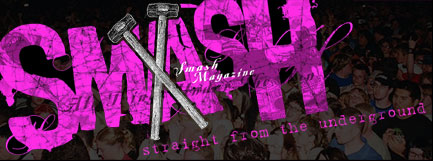
Since Smash magazine is directly marketed to those of you in the music industry, it was suggested to me to write about the topic of Copyright law. Copyright law is a segment of what is known as Intellectual Property. It’s complicated and multifaceted. This issue I will address the basic concept.
Copyright law exists as a mechanism that helps the author or creator to control the reproduction of his or her creation. If an author/creator keeps his/her work in their sole possession or doesn’t reveal it to anyone else, the work remains private and under their absolute control. However, to capitalize and exploit their work, (to make money or be heard) it is necessary to reveal or disclose it to the public. Once made public though, reproduction of the work becomes possible. A copyright is a legal device that gives him or the right to control that reproduction after the disclosure or revealing.
This protection is available to both published and unpublished works. Section 106 of the 1976 Copyright Act generally gives the owner of copyright the exclusive right to do and to authorize others to do the following:
- To reproduce the work in copies or recordings aka CDs, mp3s;
- To prepare imitative works based upon the work;
- To distribute copies or recordings of the work to the public by sale or other transfer of ownership, or by rental, lease, or lending;
- To perform the work publicly , in the case of literary, musical, dramatic, and choreographic works, pantomimes, and motion pictures and other audiovisual works;
- To display the copyrighted work publicly , in the case of literary, musical, dramatic, and choreographic works, pantomimes, and pictorial, graphic, or sculptural works, including the individual images of a motion picture or other audiovisual work; and
- In the case of sound recordings, to perform the work publicly by means of a digital audio transmission.
Copyrights do not protect from others using the information or idea exposed from the work, rather they protect the musical, written, artistic or graphic form of expression or concept that the author/creator portrays. This means for example, that a copyright won’t protect the idea for a song, but rather the song itself. Another example, an author cannot prevent the release of news written in his article but he may prevent someone from plagiarizing his work.
Copyright protection begins when any of the above-described work is actually createdand fixed in a tangible form. For example, Shaun is a musician and he lives in the United States. When he writes new lyrics, he prints them out on paper, signs his name at the bottom with the Copyright © symbol to show that he is the author, places it in an envelope and mails it to himself without opening it. His copyright begins at the moment he puts his idea in a tangible form by printing the lyrics out on paper. He creates proof when he mails it to himself - the postmark establishes the date of creation. (“Poor man’s Copyright”). He then registers his copyright with the U.S. Copyright Office which is a requirement in order to sue for monetary damages should a violation of his copyright arise. However, if somebody copies and redistributes his lyrics without permission before his copyright is registered, he still has the right to assert a copyright claim as the true author.
This is the basics. Copyright law is quite complicated. Next issue I will cover more aspects of it.
I look forward to answering more legal questions in future issues. You may send your questions and/or comments to legallyspeaking@smashmagazine.com. Remember, “Ignorance of the law is no excuse.” Until then, be safe, be kind, and be good.
The information contained in this article is for general guidance on matters of interest only. Given the changing nature of laws, rules and regulations, there may be delays, omissions or inaccuracies in information contained in this article. Accordingly, the information on this article is provided with the understanding that the authors and publishers are not herein engaged in rendering legal, or other professional advice and services. As such, it should not be used as a substitute for consultation with legal advisors.
While we have made every attempt to ensure that the information contained in this article has been obtained from reliable sources, Smash Magazine is not responsible for any errors or omissions, or for the results obtained from the use of this information. In no event will Smash Magazine, its related partnerships or corporations, or the partners, agents or employees thereof be liable to you or anyone else for any decision made or action taken in reliance on the information in this article

